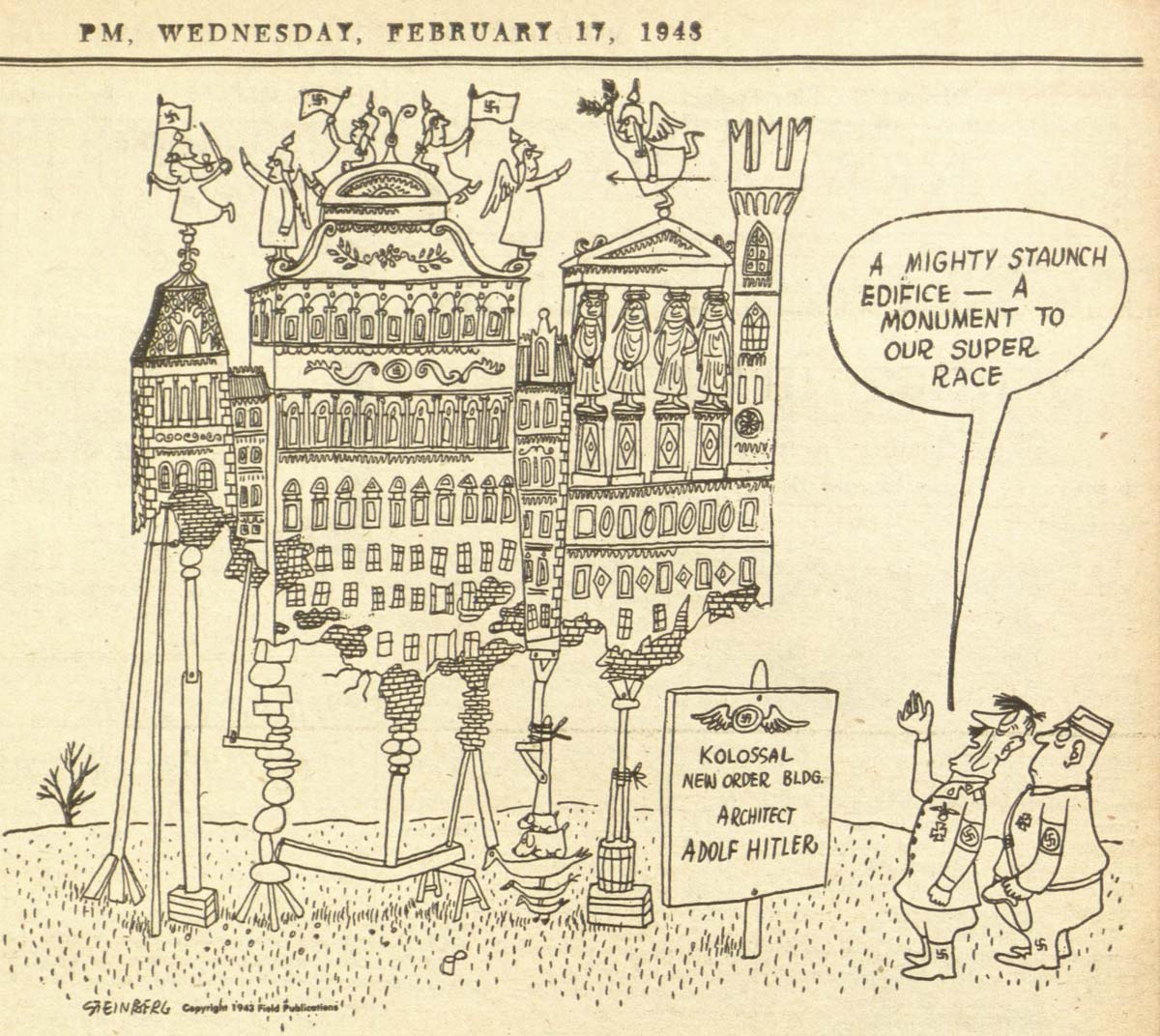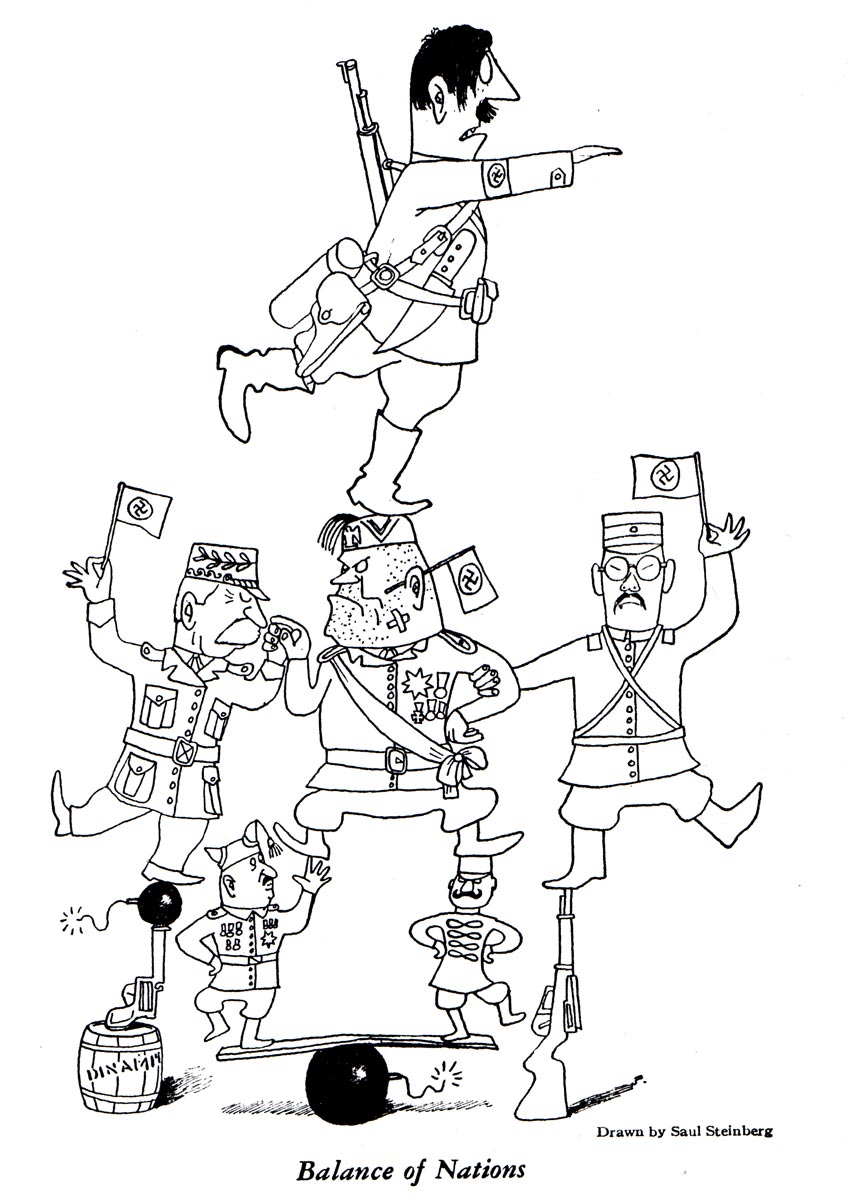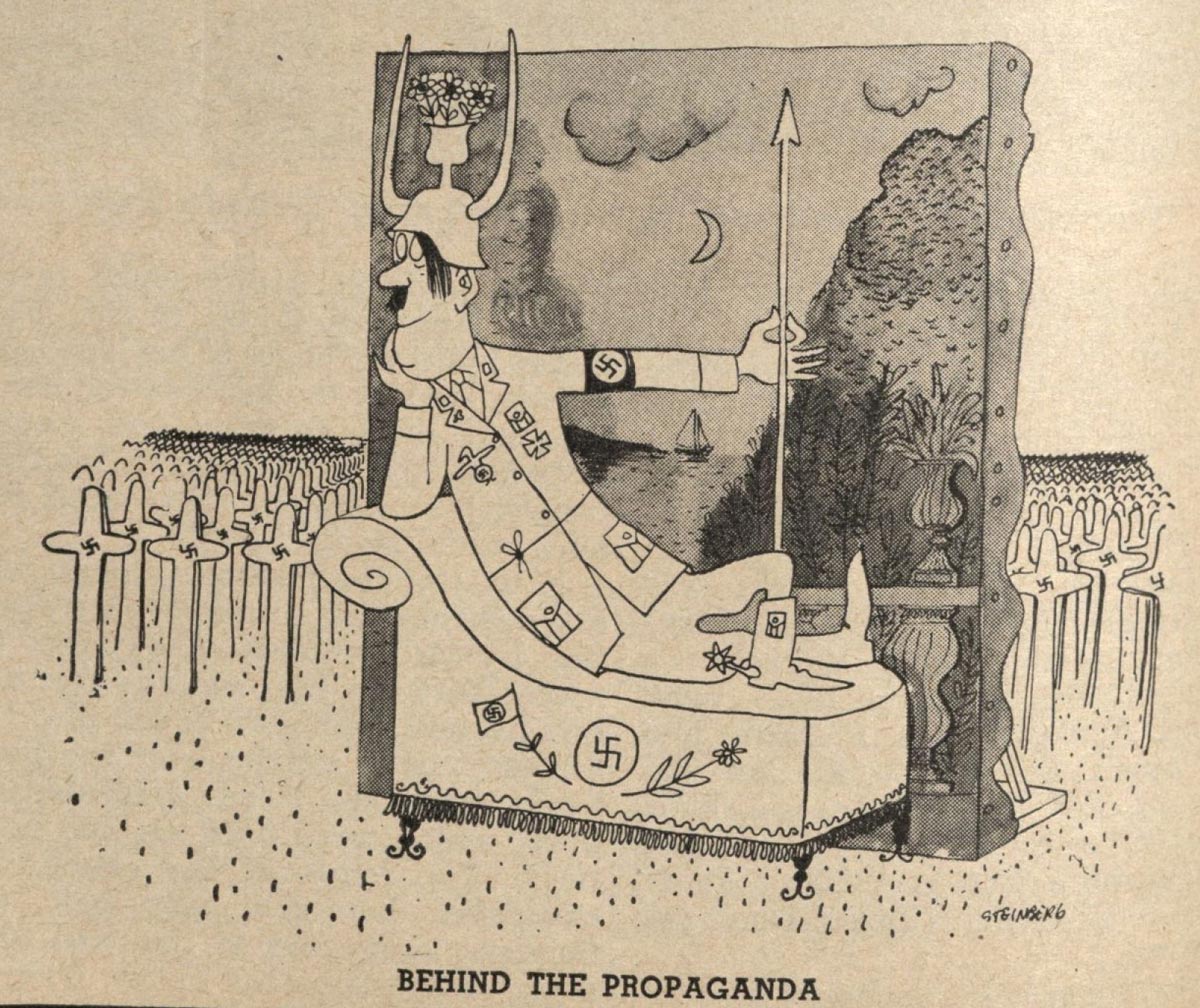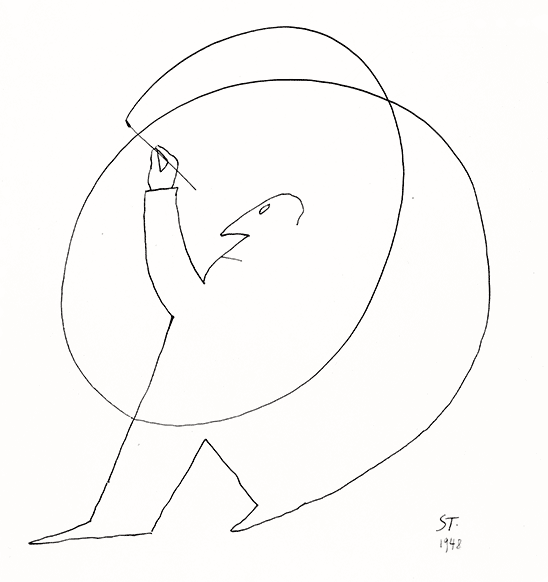1942
With the US entry into World War II, begins to draw anti-Fascist political cartoons. His first such work is published in the liberal New York newspaper PM in January; he becomes a regular contributor (through March 1943). By spring, his cartoons are appearing in Liberty and American Mercury.




February 17, included in “Cartoons Against the Axis,” a traveling exhibition organized by the Art Students League, which ends at The Metropolitan Museum of Art as “Cartoons of Today”; awarded an honorable mention. Exhibits three paintings in a juried exhibition in Ciudad Trujillo.
May 14, on behalf of ST, Civita signs a contract with The New Yorker, giving the magazine right of first refusal for all his artwork, save that commissioned by other magazines.
May 15, receives his US visa, but air transport is difficult to find.
June 28, flies to Miami; the next day boards a bus for New York, arriving July 1.
July 1, signs a contract with Civita, giving the agent 40% of his publication proceeds.
Lives in rooming houses on West 11th Street and then at the Hotel Lafayette on University Place (through April 1943). Supports himself with income from drawings published in The New Yorker and other magazines (Fortune, Mademoiselle, House Beautiful). Begins to accept assignments from advertising agencies.
August 24, is classified 1-A (available for immediate military service) by the Selective Service Board.
November, on the recommendation of Harold Ross, editor of The New Yorker, becomes consultant for the Office of War Information, Graphics Division, in New York.
Spends New Year’s Eve with Costantino Nivola, a fellow immigrant from Milan who becomes one of his closest friends. As art director of Interiors, Nivola introduces him to designers, architects, and other artists; Alexander Calder joins them. Calder and ST soon become good friends.

